by Susan Dean | Feb 3, 2018 | Herbs

Herbal Activities with Kids
Many prescription medicines contain drugs derived from natural herbs. Many perfumes and fragrances are made from the oils in herbs. Herbs have been used for at least 5,000 years by all cultures for cooking, medicine, crafts, and cosmetics. Many herbs are easy to grow and they have rich histories and many uses that provide an enticing, multi-sensory theme for learning science concepts and skills, studying other cultures, and connecting topics across the curriculum.
ACTIVITIES: WHAT MAKES AN HERB AN HERB?
“Herb” refers to any plant or plant part valued for its medicinal, savory, or aromatic qualities. In many cases, oils and the compounds that cause healing are found in herbs. Herbs give us delicious flavors and aromas.
Compare plants
Have students taste six edible leaves of basil, rosemary, thyme, oregano, chives, and parsley and describe the tastes of each.
Herbs contain oils that create the odors and flavors we experience. After smelling several herbs, have students guess how such odors might help the plants survive in their environment? (the odors can both attract helpful insects and repel “pests.”)
GROWING CLASSROOM HERBS – Many herbs can be easily grown from seeds, cuttings, or plants.
Seeds – Plant herb seeds in the same soilless potting mix you use for other indoor plants, or plant them in a mixture of 1/3 sand, 1/3 peat moss, and 1/3 soil. Most herb seeds are small, and should be planted no more than 1/4″ deep in moist soil or sprinkled on the top of soil and covered lightly with potting mix. You can have children mix tiny seeds with a small amount of sand to make them easier to sprinkle over the soil. Mist the soil, and cover containers with plastic to keep seeds moist until they germinate. To give herb plants room to grow to maturity, thin seedlings to one per 4″ container or 2 plants per 6″ container.
Cuttings – Some herbs are quicker and easier to start from cuttings than from seeds. To take cuttings, snip healthy stems 3-4 inches from the growing tip. Remove leaves from the lower half of the cutting, and plant the cutting in a soilless mix. Water gently and cover the container with a plastic bag until new top growth appears.
MOTHERS’ DAY HERB BOOKS – Have students adopt an herb to grow. Students can read seed package directions to see how to plant and care for their herbs, make ongoing observations, and drawings, and research history, folklore, medicinal, and culinary uses. Have students go through recipe books to find recipes with their particular herb. Each student can create a book to include drawings, observations, research reports, and a variety of recipes for his or her herb.
There are endless opportunities to tie language arts, math, social studies, science skills, art, and more in with an herb unit. Reflect on some of the varied uses, past and present, for herbs and consider how you might incorporate them into engaging cross-disciplinary activities.
Explore the use of herbs in different cultures and cook an international meal.
Create a class cookbook of your favorite herb recipes.
Make aromatic herbal “sachets” or catnip toys from dried herbs in fabric pouches.
Research and practice some herbal dyeing in your classroom. Herbs that are good for dyeing include: catnip, marigolds, marjoram, morning glories, parsley, rosemary, sage, and zinnias.
Have a “smell test” using aromatic herbs to see if students can identify them.
Find out about the culinary, cosmetic, and craft uses of herbs by people in a time period or culture you’re studying. For example: Pilgrims, Pioneer Days, Native American Life, Ancient Greece, the Middle Ages, the Victorian Era, etc.
Herbs have been used for thousands of years to perfume our bodies and homes. They’re used to cleanse, protect, and invigorate our skin and hair. Have students survey soaps, shampoo, cosmetics, lotions in stores or in the house to identify herbal ingredients.
If the opportunity arises, devise a “fair test” to compare the effects of the juices of the aloe plant on burns to those of a commercially made lotion.
Interview a pharmacist to find out which medicines used today are made from plants.
by Susan Dean | Feb 3, 2018 | Herbs

Smudging and Blessing Herbs
Sage is for healing. The smoke is used to bless, cleanse and heal the person or object being smudged. Sage is used to ‘wash off’ the outside world when one enters ceremony or other sacred space. Objects are likewise washed off with sage medicine smoke to rid them of unwanted influences. The plants that are called sage can come from very different families of plants. True sages are in the genus of Salvia; this includes Salvia Officinalis (garden sage) and Salvia Apiana (White Sage), also called California White Sage and Sacred Sage. Many of the herbs called sage come from a completely different family of plants, the Asteracea family. This family brings us the genus of Artemisia from which come New Mexico Sage (Artemisia tridentada), and the sage from the Dakotas (Artemisia ludoviciana), also called Grey sage, Prairie sage, Dakota sage, Lakota Sage and mistakenly sometimes called White sage. All of these sages (Salvia and Artemisia) are used for healing and cleansing. More can be learned from the book Sacred Sage, How It Heals.
Cedar is a medicine of protection. Cedar trees are very old, wise and powerful spirits. Cedar is often used to cleanse a home or apartment when first moving in, inviting unwanted spirits to leave and protecting a person, place or object from unwanted influences. Cedar is used as a name for a number of different genuses of trees and shrubs. The primary ones are Cedrus, Thuja, Libdocedrus and Juniperus.
Junipers are not true Cedars but are used as such by many people.
Sweetgrass is also called Seneca grass, holy grass and vanilla grass. This special herb’s sweet vanilla-like scent is the breath of the Earth mother, bringing the blessing of Mother Earth’s love. Sweetgrass is burned to remind us of the essence of the feminine and that the earth provides us with everything we need. Sweetgrass can be unbraided or trimmed with a scissors into small pieces and sprinkled on hot Charcoal Tablets. Allow the sacred smoke that follows to wash over the subject of the blessing.
Lavender is often used for invitation of the spirits. The name may be derived from the Latin lavare (to wash) or livendula (meaning bluish). In ancient times lavender was an important herb used in mummification. There is a legend that the clothing of baby Jesus was laid upon a lavender bush and acquired the fragrance. Some Christians still regard the scent of lavender as a safeguard against evil. Burning
CopalCopal is tree sap from Mexico similar to Frankincense. When burned it has a crisp, clean, sharp scent that is almost citrus-like. Copal is sacred to the native peoples of Mexico, as it is a gift ‘pleasing to the gods.’ Because copal is the blood of trees, it is offered to honor the enormous gift given to us by all of the tree people of our planet.
Frankincense and Myrrh were considered more valuable than gold. Used to embalm the bodies of the Egyptian Pharaohs, this tree resin is considered to cleanse and protect the soul. Frankincense is still used in religious rituals. It is said to ease depression and promote clairvoyance.
Myrrh tree resin is said to help one maintain a state of enlightenment, connect one to the spirit of youth, and clear the path of debris that stands in the way of one’s truth.
Smudging Feather – It is traditional to use a bird’s feather to brush the smoke over the person or object being blessed. It is important to use the underside of the feather to wash the smoke over the object of blessing. It is the underside of the bird and its wings that face the Mother Earth as it flies and it is this surface of the feather that offers the blessing medicine of the bird.
Other Important Herbs
Mullein has been used in smoking blends for the sacred pipe, also used as a tea for lung inflammation. Mullein is also called Yerba del lobo, velvet plant and miner’s candlestick.
Red Willow Bark is another traditional ingredient for smoking in the pipe. It is not really a willow, but a dogwood. Sioux people call this bark Chanshasha.
Osha Root is one of the roots called Bear Root. This plant grows mainly in the Rocky mountains and is used to invite the bear spirit medicine. Osha is an important medicine for people from northern Mexico to Canada, often used for infections.
Uva Ursi, called Kinnikinnik by many people, is another plant used in pipe smoking mixtures. Uva ursi is commonly used as tea for bladder infections.
by Susan Dean | Feb 2, 2018 | Health, Herbs
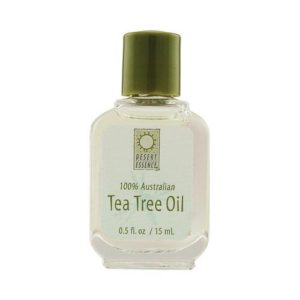
Uses for Tea Tree Oil
Acne – Tea tree oil contains very strong anti-microbial properties, which basically means it kills bacteria. It has been used to treat mild to moderate acne. Studies found that although initially it took a bit longer to see results with tea tree oil, this natural remedy was more effective and had fewer side effects than over the counter medications. For acne treatment you dilute 5 mL of tea tree oil with 95 mL of water.
Nail Fungus – Clean and dry the area thoroughly. Apply undiluted tea tree oil to toe nails unless you notice irritation. If you do notice irritation, dilute the oil slightly. Be consistent with applications to see results.
Respiratory Infections – The antibacterial properties of tea tree oil can combat the symptoms of respiratory infections. Bring a large pot of water to a boil. Remove from heat and add 2-3 drops of tea tree oil. Cover your head with a towel and inhale the tea tree vapors to help relieve congestion, sore throat and runny nose.
Dandruff – Tea tree oil helps alleviate dry scalp. To treat dandruff, add a few drops of the oil to your shampoo. If you have severe dandruff you may want to massage a small amount of tea tree oil into your scalp
Split Ends – To help daily hair issues like split ends or fly aways, take a few drops and rub it between your palms and them apply to trouble areas.
Skin Conditions – Tea tree oil can be an effective treatment for skin conditions including ringworm, insect bites, and dry skin. To use tea tree oil topically for these ailments you should dilute the oil 5mL of oil to 95mL of waters.
Warts – Warts are caused by a virus in your skin. Tea tree oil has been proven to kill all sorts of viruses and is effective at curing warts. Apply oil, full strength, to the area. Apply daily for best results.

by Susan Dean | Feb 2, 2018 | Health, Herbs
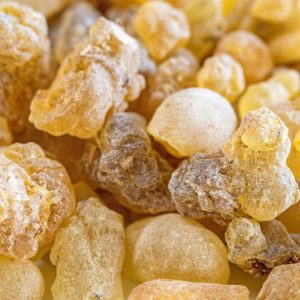
Burning Frankincense, the resin from the Boswellia tree, has been a part of religious and cultural ceremonies for a millennium. It is believed to be an aroma that will help your soul reach spiritual exaltation.
Recently a team of researchers from Johns Hopkins University and the Hebrew University in Jerusalem did a study to see what the effects were of this age-old practice. They studied Frankincense to determine why it has psychoactive effects. Researchers administered a primary Boswellia resin, incensole, and acetate to mice. They found that the ‘incensole acetate’ influences the areas of the brain that regulate emotions.
The incense activated the protein TRPV3, common in all mammal brains. This protein plays a role in our skins perception of warmth. The effect on the mind, however, has a strong anti-depressant and anxiolytic effect which can leave you feeling open and relaxed. Frankincense helps your mind to rest and simply perceive the world around it. Going to a ceremony with Frankincense would generally help people feel calmer and happier. This could help participants induce a sense of calm observation and reflect on life. It may not be a coincidence many religions and spiritual practices have you burn Frankincense.
In ancient times Boswellia resin was considered a precious commodity that came in from the sub-Saharan regions on caravans. It is still a major export in modern days.
“In spite of information stemming from ancient texts, constituents of Bosweilla had not been investigated for psychoactivity,” said co-author of the study Raphael Mechoulam. “We found that incensole acetate in mice lowers anxiety and causes anti-depressive behavior. Apparently, most present day worshipers assume that incense burning has only a symbolic meaning.”
Today frankincense is recognized for its spiritual role and a form of treatment for depression and anxiety. According to the National Institutes of Health, major depression is the leading cause of disability in the U.S. for people between the ages of 15-44. Anxiety and depression affect almost 60 million people in the United States. Depression and anxiety are linked and often overlap. It is a battle to return to a balanced state of mental peace. Natural remedies such as frankincense and tools like yoga, meditation, and proper nutrition help us return to a balanced state of health. Our sense of smell is strongly linked to the limbic system in the brain where we regulate motivation and emotion.
Frankincense possesses analgesic, anti-arthritic, antifungal, anti-inflammatory, antioxidant, antiseptic, astringent, carminative, digestive, diuretic, expectorant, sedative, and tonic properties. Frankincense is also used as a remedy for nausea, chest coughs, fever, and hypertension and is a great way to keep insects like mosquitoes away!
Frankincense water has been a traditional drink in the Middle East for Centuries. People soak 4 or 5 pieces of this resin in water overnight and drink the water.
Frankincense is a fragrant plant resin that comes from the Boswellia sacra tree found in Africa and on the Arabian Peninsula, including Yemen and Oman. Frankincense possesses analgesic, anti-arthritic, antifungal, anti-inflammatory, antioxidant, antiseptic, astringent, carminative, digestive, diuretic, expectorant, sedative, and tonic properties.
Scientists have found that there is an agent within frankincense that helps stop the spreading of cancer. It induces cancerous cells to close themselves down. According to the latest studies: “Cancer starts when the DNA code within the cell’s nucleus becomes corrupted. It seems frankincense has a re-set function. It can tell the cell what the right DNA code should be. Frankincense separates the ‘brain’ of the cancerous cell – the nucleus – from the ‘body’ – the cytoplasm, and closes down the nucleus to stop it reproducing corrupted DNA codes.”
Benefits of Frankincense Water:
Prevents digestive problems
Strengthens immune system
Works As A Natural Diuretic
Strengthens, tones, and lifts the skin, muscles, and internal organs
Promotes skin and tissue regeneration
Helps the body to get rid of toxins
Helps with stress relief and inflammation
Anti-carcinogenic
Eases Fever And Headaches
Penetrates the blood-brain barrier
Helps with bronchitis
Helps relieve sore throats
Frankincense Water:
Frankincense tears
Clean purified water
A quart glass jar
Place the Frankincense Resin in the jar. Boil water and pour over resin to fill the jar. Cover and let sit overnight. Drink a few ounces throughout the day. If it’s your first time drinking Frankincense water, introduce it to your body slowly.
Frankincense Essential Oil
One of the oldest known medical records from the sixteenth century B.C., the Ebers Papyrus, mentions frankincense oil. The ancient Egyptians listed the oil on hundreds of prescriptions and recipes.
Frankincense oil is one of the most highly prized essential oils in the world and one of the best oils you can use for your health. The astringent property of frankincense oil can help strengthen gums, stop the bleeding from wounds and cuts, help with skin health, reverse signs of aging, and reduce the appearance of stretch marks and scars. Frankincense oil can break up phlegm deposits in your respiratory tract and lungs, and can relieve bronchitis-related congestion. It can suppress the production of key inflammatory cells, helping to prevent the breakdown of cartilage tissue in patients with arthritis.
Quality frankincense oil is hard to find. Make sure you are getting the real pure organic oil.
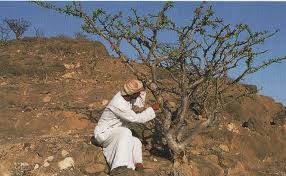
by Susan Dean | Feb 1, 2018 | Gardening, Herbs
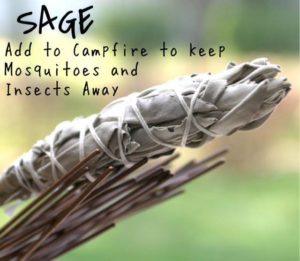
Herbs for Repelling Insects Herbs were our original household cleaners, disinfectants, and bug repellents! andThey were used with good results before humans came up with toxic chemicals. Herbs are better for the environment and continue to work for you when you put them in the compost heap. They enrich soil, add nutrients, and some like valerian attract earthworms.
- Basil Delicious in pesto, tomato dishes, and salads. It is one of the best ways to keep flies out of your house. Plant basil next to the doors or use as a foundation planting mixed in with flowers. Flies will stay far away. Mosquitoes don’t like it either.
- Bay Leaf Grow bay outside in S.C. Buy dried bay leaf if you are unable to grow it; Dried basil works for keeping pests away. One bay leaf in white flour keeps weevils out and also protects barley, cornmeal, oatmeal, quinoa, and rice. Scatter a few leaves on shelves to repel moths, roaches, earwigs, and mice. Flies hate the smell of bay leaves.
- Lavender Small amounts add a wonderful floral and citrus flavor to baked goods, meats, and vegetables. It repels moths, mosquitoes, and fleas. Hang a bundle in your closet or lay sprigs with the stored clothes. Grind and sprinkle on your pet’s bedding. It repels mosquitoes, keeps rabbits out of your lettuce and spinach.
4. Mint, catnip, and pennyroyal planted around the foundation of your house will keep ants and mice out. Pennyroyal is repugnant to fleas, ants, flies, and mosquitoes. Large amounts of pennyroyal can be toxic to pets and children.
5. Rosemary repels mosquitoes and keeps moths out of clothing..
6. Sweet Woodruff is used to deter carpet beetles and moths. Lay it beneath wool carpets. It releases a sweet scent when you walk across your rugs.
7. Tansy repels flies, ants, fleas, moths, and mice.

Five of the most effective mosquito repelling plants
1. Citronella is a common natural ingredient in mosquito repellents. The aroma is a strong smell that masks other attractants to mosquitoes. It is used in scented candles and torches. The living plant is more effective because it has a stronger smell. Citronella is a perennial ‘clumping’ grass, which grows to a height of 5 – 6 feet. It can be grown directly in the ground in climate zones where frost does not occur. Citronella plants are considered low maintenance.They do best in full sun and well-drained locations. When purchasing citronella, look for the true varieties, Cybopogon nardus or Citronella winterianus.
2. Horsemint (or Bee balm) is an adaptable perennial plant that gives off a strong incense-like odor that confuses mosquitoes by masking the smell of its usual hosts.
Horsemint is a fast growing, shade-tolerant and drought-resistant plant which reaches a height and width of 2 – 3 feet. It does well in dry, sandy soil and can tolerate salty conditions. It is often found in coastal and beach areas. Horsemint leaves can be dried and used to make herbal tea. Its flowers will also attract bees and butterflies to your garden.
3. Marigolds are hardy annual plants with a distinctive smell that mosquitoes find particularly offensive. Marigolds contain Pyrethrum, a compound used in many insect repellents. Marigolds prefer full sunlight and reasonably fertile soil. Potted marigolds can be positioned near entrances to your home and any common mosquito entry points, such as open windows. The smell may deter mosquitoes from going past this barrier. Besides repelling mosquitoes, marigolds repel insects that prey on tomato plants, so you may want to plant a few marigolds in your tomato bed for added protection.
4. Ageratum emits a smell which mosquitoes find particularly offensive. Ageratum secretes coumarin, which is widely used in commercial mosquito repellents.
Ageratum is a low-lying annual ornamental plant that will thrive in full or partial sun and does not require rich soil. It is often displayed in rock gardens where low-lying plants are favored. Although the leaves of Ageratum can be crushed to increase the emitted odor, it is not advisable to rub the crushed leaves directly on the skin.
5. Catnip is a natural mosquito repellent. Entomologists at Iowa State University reported to the American Chemical Society that catnip is ten times more effective than DEET, the chemical found in most commercial insect repellents. Catnip, Nepeta cateria, is very easy to grow. Some people apply crushed catnip leaves or catnip oil for more robust protection. Cats will respond to you similarly as they would respond to the plant itself. Cat owners may want to choose an alternative plant for repelling mosquitoes.
Many commercial insect repellents contain from 5% to 25% DEET. There are concerns about the potential toxic effects of DEET, especially when used by children. Children who absorb high amounts of DEET through insect repellents have developed seizures, slurred speech, hypotension and bradycardia.
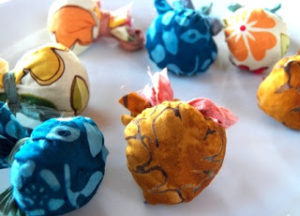 Mothballs
10 Tbsp dried lavender flowers
Mothballs
10 Tbsp dried lavender flowers
20 drops Lavender oil
20 drops Cedar Wood oil
5 pieces of fabric, cut into squares
Ribbon and scissors
In a bowl, combine lavender flowers with essential oil. Stir until lavender fully absorbs the oils. Transfer to a glass jar, cover and store for 24 hours. Spread each piece of fabric on a flat surface. Place 2 Tbsp of the lavender mix onto the fabric. Pull up the corners of the fabric, and tie your ribbon tightly around the loose edges to create a ball. Secure with a bow or knot and trim fabric. Tuck each ball between clothing layers inside your drawers. These homemade mothballs smell good, and they are effective.
by Susan Dean | Feb 1, 2018 | Herbs
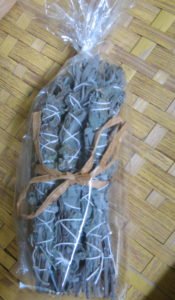 Smudging and Blessing Herbs
Smudging and Blessing Herbs
Sage is for healing. The smoke is used to bless, cleanse and heal the person or object being smudged. Sage is used to ‘wash off’ the outside world when one enters ceremony or other sacred space. Objects are likewise washed off with sage medicine smoke to rid them of unwanted influences. The plants that are called sage can come from very different families of plants. True sages are in the genus of Salvia; this includes Salvia Officinalis (garden sage) and Salvia Apiana (White Sage), also called California White Sage and Sacred Sage. Many of the herbs called sage come from a completely different family of plants, the Asteracea family. This family brings us the genus of Artemisia from which come New Mexico Sage (Artemisia tridentada), and the sage from the Dakotas (Artemisia ludoviciana), also called Grey sage, Prairie sage, Dakota sage, Lakota Sage and mistakenly sometimes called White sage. All of these sages (Salvia and Artemisia) are used for healing and cleansing. More can be learned from the book Sacred Sage, How It Heals.
Cedar is a medicine of protection. Cedar trees are very old, wise and powerful spirits. Cedar is often used to cleanse a home or apartment when first moving in, inviting unwanted spirits to leave and protecting a person, place or object from unwanted influences. Cedar is used as a name for a number of different genuses of trees and shrubs. The primary ones are Cedrus, Thuja, Libdocedrus and Juniperus.
Junipers are not true Cedars but are used as such by many people.
Sweetgrass is also called Seneca grass, holy grass and vanilla grass. This special herb’s sweet vanilla-like scent is the breath of the Earth mother, bringing the blessing of Mother Earth’s love. Sweetgrass is burned to remind us of the essence of the feminine and that the earth provides us with everything we need. Sweetgrass can be unbraided or trimmed with a scissors into small pieces and sprinkled on hot Charcoal Tablets. Allow the sacred smoke that follows to wash over the subject of the blessing.
Lavender is often used for invitation of the spirits. The name may be derived from the Latin lavare (to wash) or livendula (meaning bluish). In ancient times lavender was an important herb used in mummification. There is a legend that the clothing of baby Jesus was laid upon a lavender bush and acquired the fragrance. Some Christians still regard the scent of lavender as a safeguard against evil. Burning
CopalCopal is tree sap from Mexico similar to Frankincense. When burned it has a crisp, clean, sharp scent that is almost citrus-like. Copal is sacred to the native peoples of Mexico, as it is a gift ‘pleasing to the gods.’ Because copal is the blood of trees, it is offered to honor the enormous gift given to us by all of the tree people of our planet.
Frankincense and Myrrh were considered more valuable than gold. Used to embalm the bodies of the Egyptian Pharaohs, this tree resin is considered to cleanse and protect the soul. Frankincense is still used in religious rituals. It is said to ease depression and promote clairvoyance.
Myrrh tree resin is said to help one maintain a state of enlightenment, connect one to the spirit of youth, and clear the path of debris that stands in the way of one’s truth.
Smudging Feather – It is traditional to use a bird’s feather to brush the smoke over the person or object being blessed. It is important to use the underside of the feather to wash the smoke over the object of blessing. It is the underside of the bird and its wings that face the Mother Earth as it flies and it is this surface of the feather that offers the blessing medicine of the bird.
Other Important Herbs
Mullein has been used in smoking blends for the sacred pipe, also used as a tea for lung inflammation. Mullein is also called Yerba del lobo, velvet plant and miner’s candlestick.
Red Willow Bark is another traditional ingredient for smoking in the pipe. It is not really a willow, but a dogwood. Sioux people call this bark Chanshasha.
Osha Root is one of the roots called Bear Root. This plant grows mainly in the Rocky mountains and is used to invite the bear spirit medicine. Osha is an important medicine for people from northern Mexico to Canada, often used for infections.
Uva Ursi, called Kinnikinnik by many people, is another plant used in pipe smoking mixtures. Uva ursi is commonly used as tea for bladder infections.
|
 |










